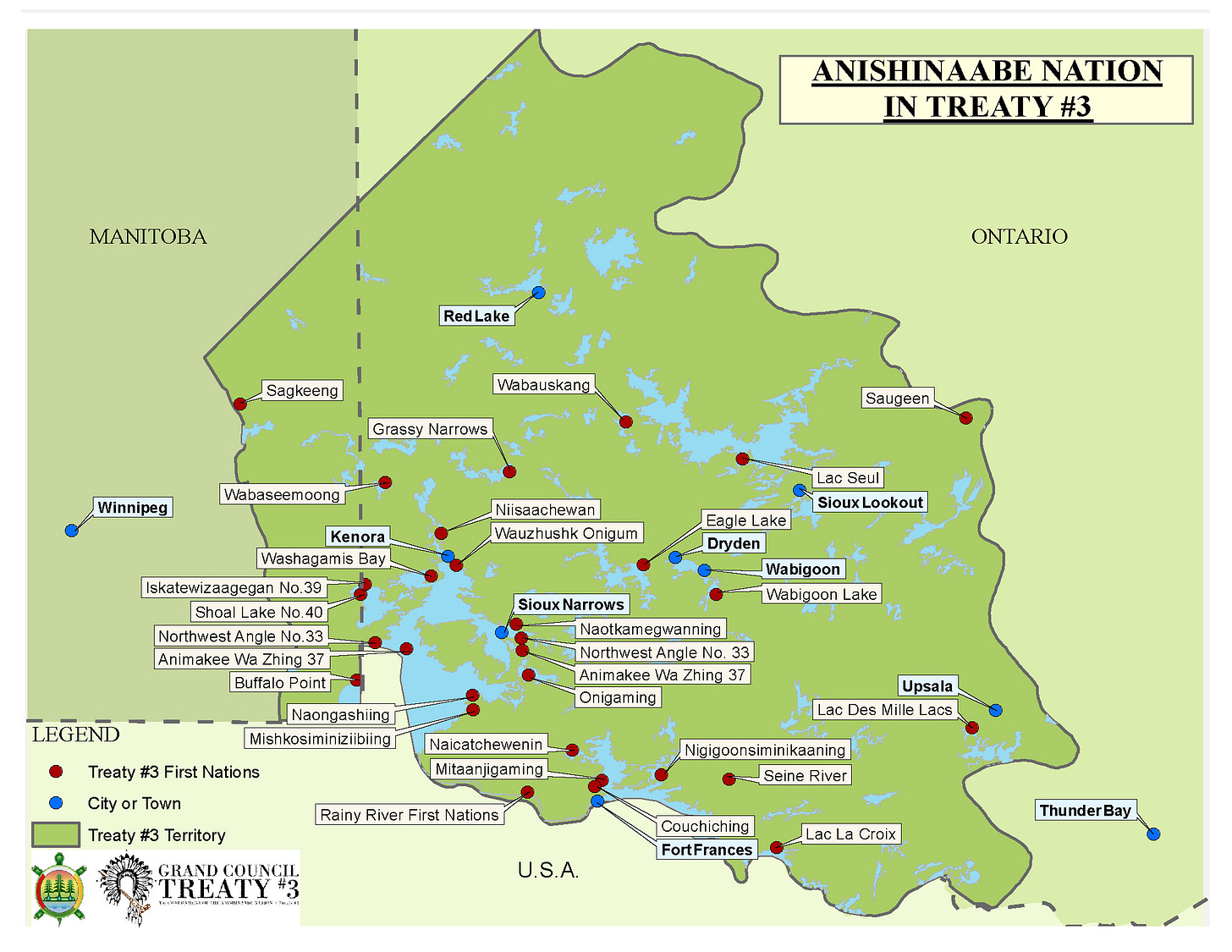This pipe belonged to Chief Ay Ash Wash, Don Kakaygeesick’s great-great-grandfather. It lies in this velvet-lined box with his father’s Purple Heart from WWII and a silver coin from Queen Victoria. The pipe stem, decorated with silver and red stone inlay, lays horizontal to the bowl similarly adorned. The black stone from which it is made is only found at Buffalo Point on Lake of the Woods where it was first used during Treaty #3 negotiations. The ceremonial smoking of this pipe finalized this sacred agreement between the British Crown and the Ojibway in 1873.
The pipe is word written in stone.
I took a road trip to Warroad this past week and met with Don Kakaygeesick on Thursday. He had been in Kenora, Ontario, as a ceremonial pipe carrier for the commemorative events observing the one-hundred-and-fiftieth anniversary of Treaty #3.
Treaty #3 was an agreement reached on October 3, 1873, between the British Crown and Ojibway residents to share the land and resources of 55,000 square miles north of the US border above Minnesota in the Canadian provinces of Ontario and Manitoba. The chimney of Minnesota is in the lower left hand-corner of this map of the treaty territory.
Canada, a British confederation, considered the treaty a surrender of Ojibway land as they intended to build a transcontinental railroad across it. They gave each chief who marked an X next to their name on the paper document a coin, which you can see above on the left in the wooden pipe case. Canada wrote its promise in silver stone.
Treaty #3 is not a single document, but several; and it is an ongoing process of establishing agreement about obligations between sovereign nations. Over the past century and a half, this binding contract has been modified, amended, challenged in the courts, and established important historical precedent for sovereignty of the Anishinaabe nation.
Today Grand Council Treaty #3 is the traditional government of 28 First Nation communities, with a total population of approximately 25,000. The Grand Council issued a new silver coin in 2023 to mark the 150th year of the treaty. Don showed me his.
The design replicates the original silver coins issued by the Crown in 1873 (which had the head of Queen Victoria on one side as seen above in the first image) and on the other side, this scene with a White man shaking hands with an Ojibway man.
On the flip side of Don’s new coin there is no head of royalty engraved into the silver stone but a full color reminder this treaty lasts as long as the sun will shine and the water runs.







